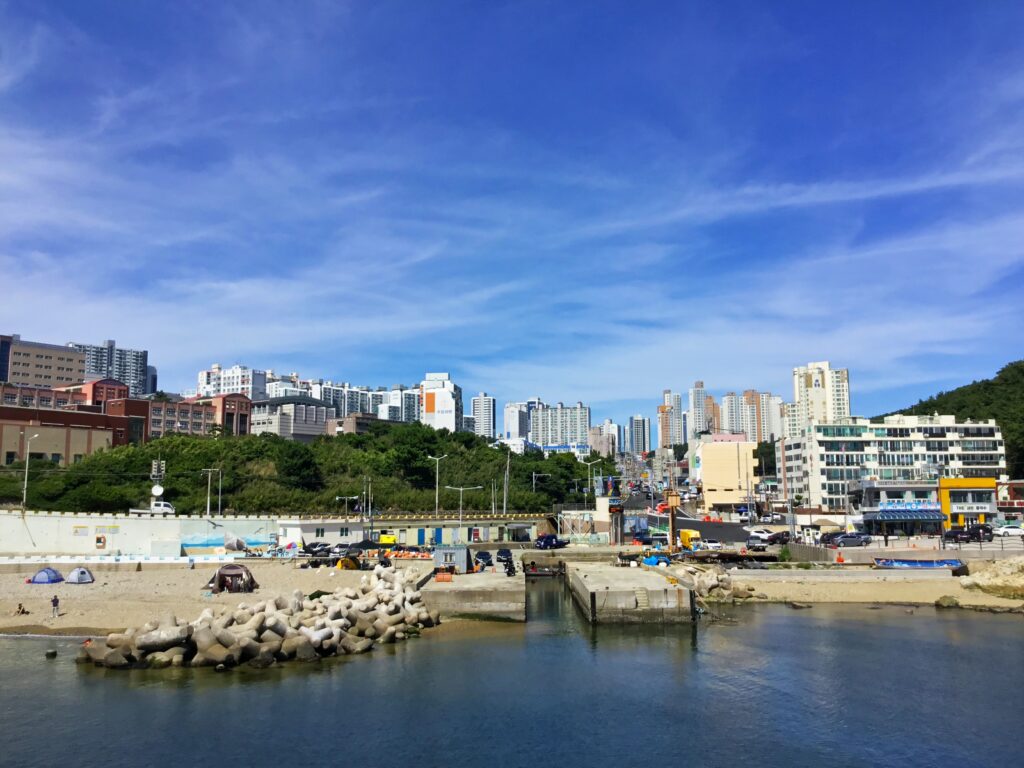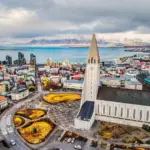
Busan South Korea is a destination that captivates visitors with its vibrant, multicultural atmosphere. Located in the southeast of the Korean peninsula, this coastal city enchants with its unique blend of modernity and tradition. South Korea's second-largest city, with a diverse population and rich cultural heritage, Busan offers a truly enriching experience for travelers.
Busan's history dates back centuries, when the region was known as Dongnae-gun during the Three Kingdoms period of Korea. Over the years, the city developed into a major seaport, playing a key role in South Korea's international trade.
Its strategic location has given it geopolitical and economic importance throughout history. Today, Busan is recognized as a growing financial and cultural center.
Its modern skyscrapers stand out against the skyline, contrasting with historic temples and traditional shrines scattered throughout the city. The fusion of old and new is evident on every corner of Busan.

City Girls Colliding: The Multiculturalism of Busan, South Korea
One of Busan's most distinctive features is its cosmopolitan nature. The city is home to a diverse population, comprising both Korean residents and a vibrant international community.
People from all over the world flock to Busan, bringing their unique cultures and creating a truly multicultural atmosphere. This diversity is evident in Busan's cuisine, which features a wide variety of international flavors to satisfy even the most discerning palates.
From street food to elegant restaurants, visitors have the opportunity to sample traditional Korean dishes alongside international culinary delights. The diverse culinary scene reflects the city's cultural richness.
Busan also prides itself on hosting cultural events throughout the year that celebrate diversity and promote cultural exchange. International film festivals, contemporary art exhibitions, and music concerts attract global talent while placing Busan on the map as a vital and cosmopolitan artistic destination.

A Window to the Past: The Historical Significance of Busan
History has played a crucial role in shaping Busan's identity. Over the centuries, the city has witnessed foreign invasions, wars, and significant political transformations. These historical events shaped not only the city's character but also its national importance.
One of the most iconic landmarks is the Yeongdo Daegyo Trestle Bridge, which dates back to the Japanese occupation. This iconic bridge is a tangible reminder of the past and represents the resilience and resilience of the people of Busan in the face of adversity.
Also, a visit to Gamcheon Cultural Village reveals the story of the Korean refugee communities that settled in this area after the Korean War. The narrow streets and colorful houses are living testaments to the perseverance and creativity of the people of Busan in the face of hardship.
In short, Busan is not only a modern city with impressive infrastructure, but also a cultural treasure rooted in its history. Its multiculturalism and importance historical make Busan a destination truly unique in South Korea.

Geography and Location
A coastal treasure in the southeast of the Korean Peninsula
Busan, the second largest city in South Korea, is a true coastal treasure located in the southeast of the Korean peninsula. Its strategic location on the shores of the Sea of Japan makes it an important commercial and tourist center. Surrounded on three sides by the ocean, Busan stands out for its natural beauty and stunning landscapes.
The majestic mountainous composition of Busan
The mountainous landscape surrounding Busan adds a picturesque layer of charm to the city. Lush green hills with imposing peaks rise in the background, offering magnificent views of the sparkling ocean.
Mount Baekyangsan, Mount Geumjeongsan, and Mount Hwangnyeongsan are just some of the elevations that frame the city. Hiking the trails of these mountains offers visitors a unique experience, allowing them to appreciate the grandeur of nature while enjoying the invigorating sea breezes.
Stunning views that will take your breath away
The combination of a coastal location and mountainous landscapes makes Busan a place filled with stunning views that are sure to take your breath away. Imagine yourself at a strategically positioned lookout point high atop a mountain, gazing out over the city stretching along the coast, with the endless blue of the sea as your backdrop. These panoramic views are truly enchanting and provide a unique perspective on the natural beauty from Busan.

The Stunning Beaches of Busan
The city of Busan is blessed with a variety of stunning beaches that attract tourists and local residents throughout the year. Among them, two beaches stand out as unmissable destinations for those visiting the region: Haeundae Beach and Gwangalli Beach.
Haeundae Beach: A Seaside Paradise
Located in the eastern part of the city, Haeundae Beach is widely considered South Korea's most famous beach. With its fine white sand contrasting with crystal-clear waters, this beach offers an idyllic setting for sun and sea lovers. During the summer months, Haeundae Beach comes alive with a lively atmosphere, where visitors can enjoy activities such as swimming, sunbathing, and exciting water sports. Additionally, along the shore, you'll find a plethora of beachfront restaurants serving fresh seafood and local delicacies to satisfy your appetite after a refreshing dip.
Gwangalli Beach: The Synergy Between the Ocean and Gwangan Bridge
Located in the bustling Suyeong-gu neighborhood, Gwangalli Beach is popular with young people for its vibrant atmosphere and scenic views of the Gwangan Bridge. At night, the bridge lights up in a variety of colors, providing a spectacular spectacle while relaxing on the beach.
Gwangalli Beach is also known for its golden sand and clear, calm waters, perfect for swimming or more leisurely water sports like kayaking or stand-up paddleboarding. The area is also home to a variety of beachfront bars and restaurants, where you can enjoy delicious cuisine while admiring stunning ocean views.
Exploring Historic Temples and Shrines
Besides its beautiful beaches, Busan is also home to historic temples and shrines that offer visitors a unique spiritual experience. Two notable sites are Haedong Yonggungsa Temple and Be Shrine.

Haedong Yonggungsa Temple: Charmingly by the Sea
Haedong Yonggungsa Temple is a true cultural treasure that harmoniously combines natural beauty with traditional temple architecture. Unlike most Korean temples, which are located in the mountains, this one is situated by the sea, ensuring a serene and relaxing atmosphere.
Visitors can explore the temple's various sacred spaces while enjoying panoramic ocean views. The temple is also famous for housing a statue of a sea deity considered the protector of sailors.
Sanctuary Be: A Tranquil Retreat
Be Shrine, located in the heart of Busan, offers a peaceful retreat from the hustle and bustle of the city. This shrine is known for its impressive architectural structures, including a beautiful pagoda and ornate gates. Strolling through Be Shrine's landscaped gardens, visitors can experience tranquility and inner peace as they explore the various sacred spaces and participate in meditative Buddhist practices.
Conclusion
Busan, with its stunning beaches, historic temples and serene shrines, offers an experience unique to visitors. Whether you're a lover of sunny beaches or someone seeking spiritual connection, this city has something special for everyone. Exploring Haeundae Beach and Gwangalli Beach will reward you with stunning ocean views and opportunities to create unforgettable seaside memories.
And by visiting Haedong Yonggungsa Temple and Be Shrine, you'll have the chance to experience South Korea's rich cultural history while connecting with your inner spirituality. So, be sure to add Busan to your bucket list. destinations to be explored, as this charming seaside town is sure to leave a lasting impression on your mind and soul.
Lucas Wanderlust has a tireless spirit of adventure, always seeking new travel experiences. Fascinated by the world and the possibility of exploring unknown destinations, he fell in love with the sense of freedom and self-discovery that traveling alone provides. With a backpack on his back and a heart open to the unknown, Lucas embarks on exciting journeys, where each destination becomes a unique chapter in his life story. He gives himself body and soul to the magic of solo travel, inspiring others to follow in his footsteps and discover themselves through adventure.







